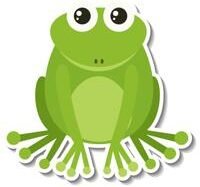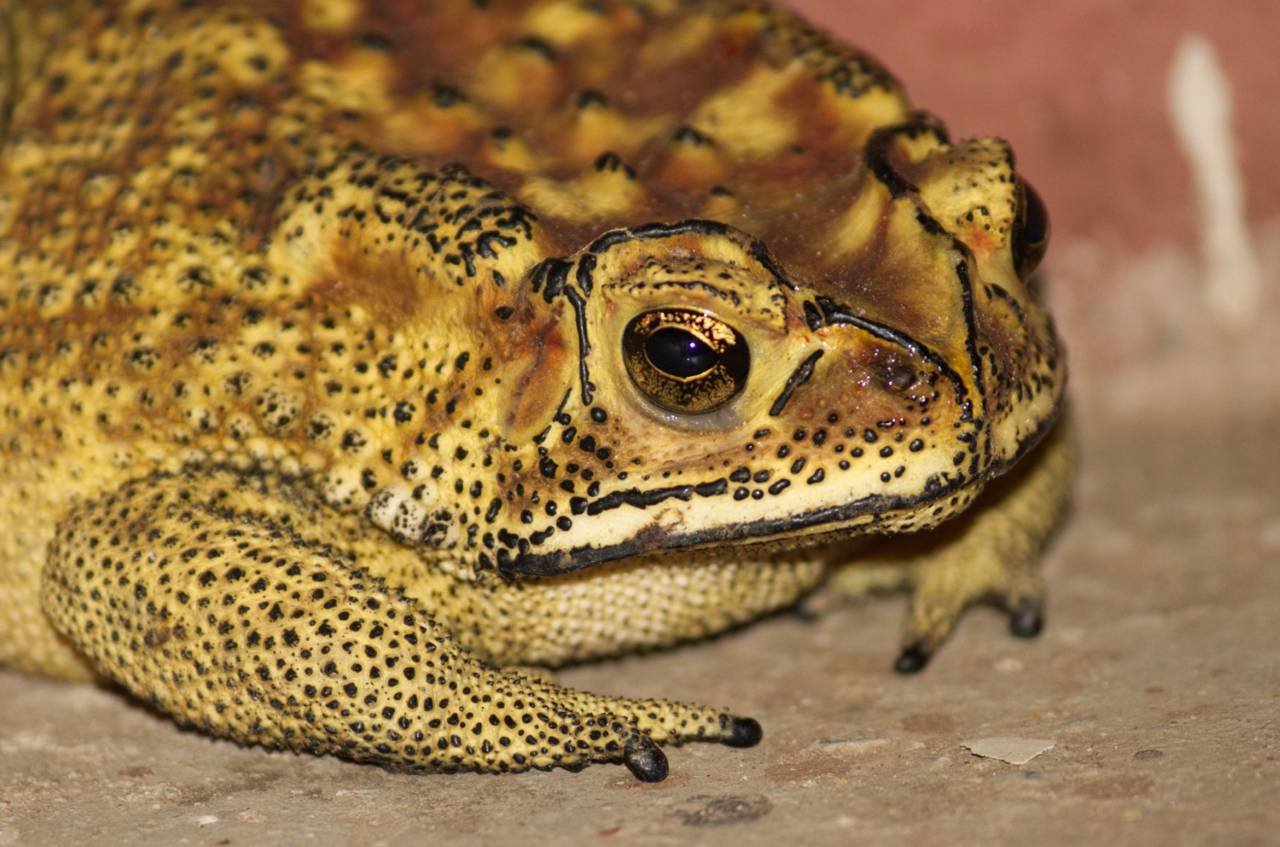The Goliath Frog, scientifically known as Conraua goliath, holds the title of the largest frog species on the planet. Native to the forests of Central Africa, this impressive amphibian captivates with its enormous size and unique habits. Let’s explore the fascinating world of the Goliath Frog and discover what makes it a true giant among amphibians.
Characteristics and Appearance
Goliath Frogs are remarkable for their sheer size, with adults measuring up to 12.5 inches (about 32 centimeters) in length and weighing over 7 pounds (about 3.3 kilograms). They have a robust, muscular build and a greenish-brown coloration that helps them blend into their natural surroundings. Their impressive size and strength allow them to perform powerful leaps, which aid in both hunting and evading predators.
Habitat and Distribution
These frogs inhabit the fast-flowing rivers and waterfalls of the rainforests in Cameroon and Equatorial Guinea. Their ideal habitat consists of areas with abundant vegetation and rocky substrates, providing effective camouflage and ample hunting grounds.
Diet and Feeding Habits
Goliath Frogs are carnivorous, feeding on a wide variety of prey including insects, crustaceans, fish, and occasionally smaller amphibians. Their large mouths and powerful jaws enable them to tackle relatively large prey items compared to other frog species.
Size and Developmental Stages
Froglet and Tadpole Growth
- Eggs and Hatching: The eggs of Goliath Frogs are laid in fast-flowing rivers. They typically hatch after 70 to 85 days, depending on water conditions and temperature.
- Tadpoles: Upon hatching, the tadpoles feed primarily on aquatic vegetation and undergo a lengthy developmental stage in the river environment.
- Growth to Adulthood: It can take Goliath Frogs 10 to 12 months to reach their adult size. During this time, they grow substantially from tiny froglets to the massive adult frogs that are recognized for their impressive size.
Waste and Consumption
- Frog Waste: Due to their size, the feces of a Goliath Frog are also sizable, though exact measurements may vary with diet and health.
- Feeding Requirements: Goliath Frogs have substantial dietary needs, consuming a variety of protein-rich prey to maintain energy levels and support their growth.
Conservation Status
Due to habitat destruction, pollution, and overhunting (especially for the pet trade and as a food source), the Goliath Frog is considered an endangered species. Conservation efforts focused on habitat protection and sustainable management practices are critical to ensuring their survival.
FAQs About Goliath Frogs
How big can Goliath Frogs grow?
Goliath Frogs can reach up to 12.5 inches in length and weigh over 7 pounds, making them the largest frog species in the world.
Where do Goliath Frogs naturally live?
They are found in fast-flowing rivers and waterfalls in the rainforests of Cameroon and Equatorial Guinea.
What do Goliath Frogs eat, and how much do they consume daily?
Goliath Frogs eat insects, crustaceans, fish, and smaller amphibians. Their specific daily intake varies based on availability and size, but they require substantial food due to their large size.
Are Goliath Frogs endangered?
Yes, Goliath Frogs are endangered due to habitat destruction, pollution, and hunting. Conservation efforts are crucial for their survival.
Can Goliath Frogs be kept as pets?
While they are occasionally kept in zoos and research facilities, keeping them as pets is not recommended due to their specific environmental needs and conservation concerns.
What makes Goliath Frogs unique compared to other frogs?
Goliath Frogs are unique due to their size, being the largest frog species in the world. Their powerful leaps and ability to consume large prey also set them apart from other amphibians.
How do Goliath Frogs reproduce?
Goliath Frogs lay their eggs in fast-flowing rivers during the rainy season. The tadpoles develop in oxygen-rich waters while feeding primarily on aquatic vegetation.
What are the main threats to Goliath Frog populations?
Goliath Frogs face threats from habitat destruction, pollution, and overhunting for the pet trade and as a food source. Conservation measures are necessary to address these threats.
How do Goliath Frogs contribute to their ecosystem?
As both predator and prey, Goliath Frogs play a crucial role in maintaining the ecological balance within their habitat, controlling populations of insects and other small animals.
Is it possible to see Goliath Frogs in the wild?
While they are found in specific regions of Cameroon and Equatorial Guinea, their endangered status and remote habitat make observing them in the wild challenging. Conservation areas may offer opportunities to view them in protected environments.

